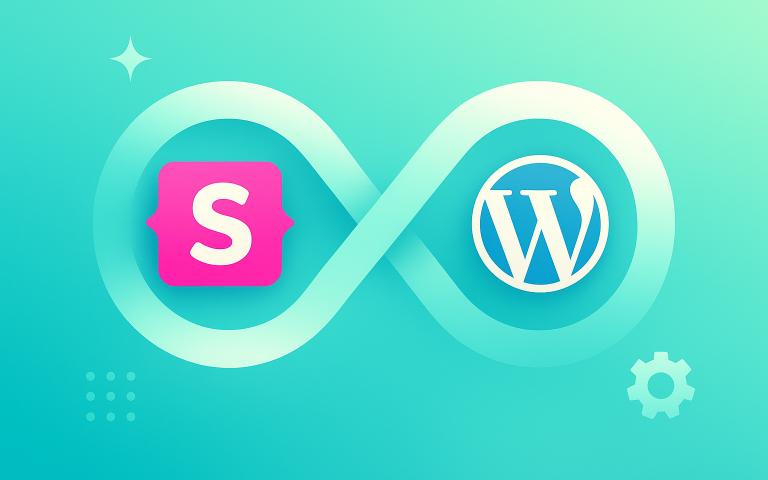Statamic vs WordPress: a practical, no-drama comparison
There are two popular ways to launch a corporate site: a fast start on a ready-made WordPress theme, or a code-first build without page builders—either on Statamic or on a custom WordPress theme. Below is a plain, business-oriented look at design, security, speed, and total cost of ownership, with a light tilt toward the “no page builders” approach.

Introduction: why compare them this way
Most business sites begin the same: you have content, layouts, and deadlines. Differences appear later—when features grow, the team changes, and the site must stay fast and safe without surprises. WordPress delivers a phenomenal time-to-market thanks to its themes and plugins. Statamic offers a more “in-code” model with version-controlled changes and fewer external dependencies. The practical question is simple: do you win more from launching now, or from predictable maintenance a year or two from now?
Custom design: why life is easier without page builders
If a distinct brand design and clean markup matter to you, skipping visual page builders tends to be calmer in the long run. In Statamic, templates are built directly in code, so developers control the HTML and CSS instead of conforming to a builder’s grid and helper markup. That makes it easier to match the design precisely, avoid extra HTML/CSS/JS, and keep pages light.
You can achieve the same quality on WordPress with a custom theme—which is also a “no page builders” route. The difference isn’t in platform power; it’s in the working style. Builders like Elementor or Divi absolutely speed up standard sections and are great for an MVP. The trade-off is extra service markup, dependencies, and small compromises that add up. The more unique your design, the more you feel this “convenience tax.”
Security: where the risks are and how to manage them
WordPress dominates the market. That scale is a strength—huge choice of solutions—and also a risk: many plugins and themes mean a larger attack surface. Most incidents don’t stem from a “bad core,” but from plugin quality and irregular updates. It’s more accurate to say poorly assembled WordPress sites are the ones that get breached most often.
Statamic’s ecosystem is smaller and the workflow more developer-centric: fewer random modules, minimal “live edits” in production, changes go through the repository and review. That doesn’t make it magically invulnerable, but it reduces the chances of accidental holes and version conflicts. For a business, that translates into lighter processes for editors and more controllable update routines. If your team can’t commit to strict plugin hygiene and patch cadence, a stack with fewer moving parts is typically safer day-to-day.
Performance & stability: what matters now and later
Speed isn’t a one-off PageSpeed screenshot; it’s the ability to stay fast as content grows and blocks get more complex. A no-builder approach helps keep Core Web Vitals in the green: pages are lighter, critical CSS is under control, and there’s less stray JavaScript. WordPress can absolutely be fast when the theme is lean, plugins are carefully chosen, and caching/CDN are set up well. But a single heavy plugin or a “pretty but hungry” visual block can burn your performance budget quickly. With Statamic, it’s harder to bloat a page by accident because every addition is a deliberate code change.
Total cost of ownership (TCO): fast launch vs predictable upkeep
Let’s keep it simple: a basic site on a ready-made WordPress theme launches faster and cheaper—that’s WP’s superpower. Then real life begins: updates, new sections, integrations. This is where the paths diverge.
- Path 1: WP + page builder / many plugins. You gain speed up front, but long-term costs rise: deeper dependency on third-party modules, harder “safe” updates, and often worse speed metrics from added markup and scripts. Maintenance becomes ongoing compatibility checks and manual optimization.
- Path 2: No page builders—Statamic or a custom WP theme. You may pay more at the start (more engineering), but updates are more predictable: fewer hidden couplings, changes flow through code review, and the risks of regressions or speed drops are lower. The Statamic license typically pays for itself by reducing hours spent on support and performance fixes.
If you need to get on air fast and a standard look is acceptable, a WordPress theme wins the launch price. If the project will grow (distinct design, regular releases, integrations), a no-builder stack often erases the initial gap and is frequently cheaper over 12–24 months.
What businesses should choose: a practical takeaway
If you want to go live in a few weeks and a standard appearance is fine, choose WordPress with a ready-made theme—it’s the shortest path. If you care about a distinctive brand design, stable speed, and controlled security without a plugin zoo, choose a no-builder route: Statamic or a custom WordPress theme (the decision depends on your team’s skills).
To decide without emotion, answer three simple questions:
- Design & content. How unique are the layouts? How many page types and fields do you really need?
- Releases & integrations. How often will you ship changes, and which external services are critical?
- Maintenance. Who will handle updates and monitoring? Do you have discipline around plugins and testing?
If the design is standard and the timeline tight—go with a WordPress theme. If you need a platform for growth, with quality control and a smaller attack surface—go with a no-builder stack: Statamic or a custom WP theme. In both cases you’re optimizing for manageability and predictability—and that’s what pays off over the long run.
Get in touch
Need help with Statamic?
Tell us your context and the outcome you want, and we’ll suggest the simplest next step.